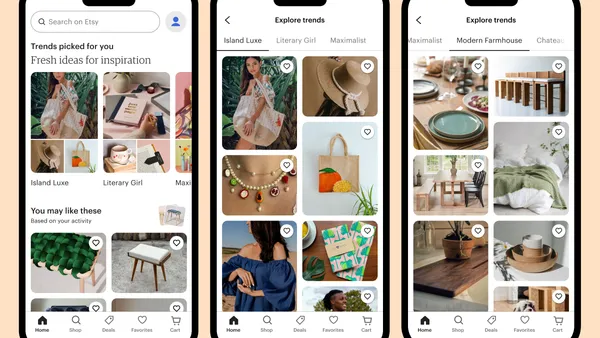Dive Brief:
-
Adidas is looking to partner with third party firms to create more personalized experiences for its fitness technology solutions as it shifts those efforts to focus on building an ecosystem for the Runtastic app it acquired in 2015, according to an Engadget report out of South by Southwest 2017.
-
The sportswear brand last month said it would be consolidating its digital efforts under the Runtastic banner, which already had 100 million users when it was acquired by Adidas, and shutting down its miCoach platform of health and fitness products.
-
Adidas told Engadget that because not everyone takes the same approach to working out, it is trying to tailor fitness experiences to individuals. It will look to do that in part by opening its own content and technology to third party devices.
Dive Insight:
So, Adidas is deciding to focus its personal fitness development energies around an app that long ago passed 100 million users (and which Adidas spent almost $240 million to acquire). This seems like a no-brainer and also maybe something that should have happened sooner.
These efforts come not long after Adidas competitor Nike revamped its Nike+ mobile app, a move that was intended to create a more seamless experience across a variety of Nike applications. By folding one app platform (miCoach) into another (Runtastic), Adidas may be looking to make things less confusing for itself and users by supporting fewer platforms.
Fitness apps are very much tied to the wearables market, and the wearables market has not developed the way some major device companies have figured it would, a notion most recently displayed in Best Buy's fourth quarter 2016 earnings report, which showed wearable to be among the product categories that experienced sales declines during the holiday period. It's not clear yet which other third party firms Adidas will be working with, how those partnerships will take shape or who will bringing what to the table. Opening itself to more partnerships could in some cases mean that Adidas' ability to move quickly with new offerings will be somewhat dependent on those partners.
Still, Adidas has its head in the right place with this effort. It is trying not to impose its own iron-clad device and app vision on fitness app users, recognizing that people want to use fitness apps in different ways and focus on using different features and functions, depending on how intensely they work out and what they train for. Creating an ecosystem that can bring as many new features and combinations of feature to the table as possible could be what helps Adidas stand out in the fitness app world.













